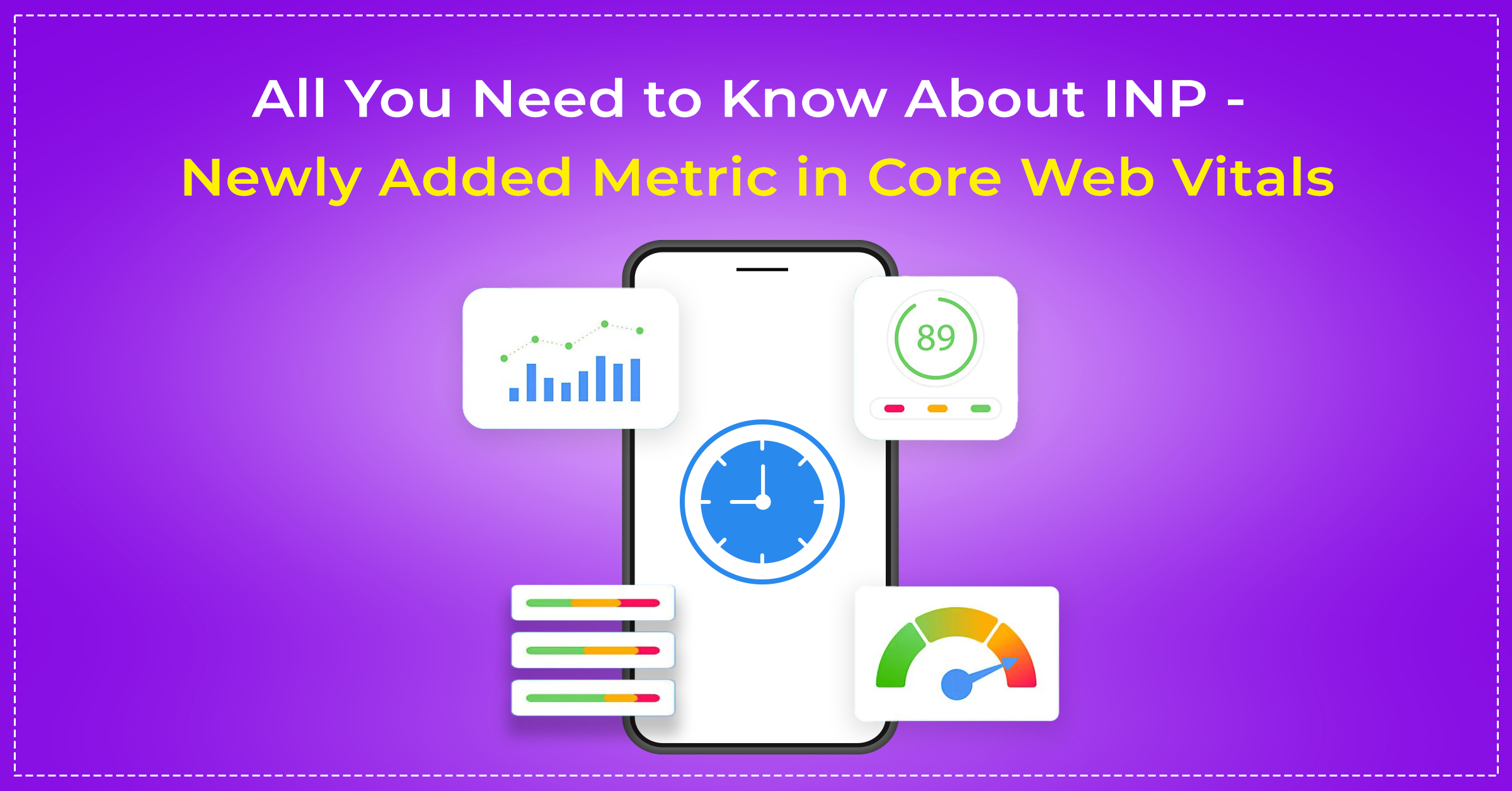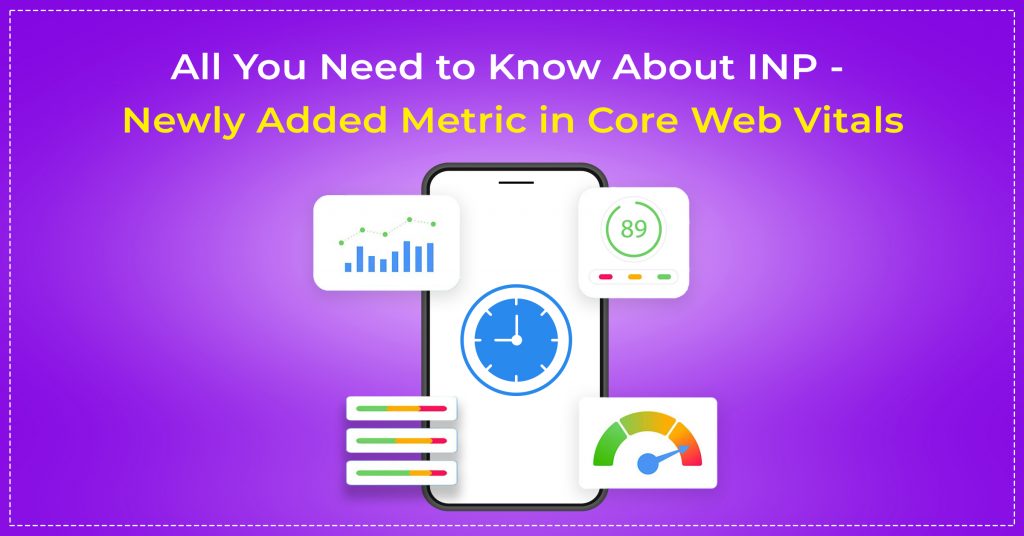What is INP?
INP stands for Interaction to Next Paint. It measures the time delay in response after a click, tap, or keyboard interaction event was registered on the webpage. INP is measured in milliseconds (ms).
Examples of interaction events are the opening of an accordion on a click, the movement of a carousel on a click, playing a video using a click, scrolling using a keyboard tap, etc.
INP has replaced First Input Delay (FID) from Google’s Core Web Vitals.
What is a good INP score?
According to Google, an INP score of less than or equal to 200ms is considered good. It symbolizes that your website’s elements are quite fast in responding to user’s requests.
An INP score above 500 ms is considered poor and it means that the elements on your web pages are generating responses at a very slow pace.
Where can you check your website’s INP score?
You can view your website’s INP score on the PageInsights tool or Google Search Console tool.

Chrome User Experience (CrUX) Data serves as the dataset for the core web vitals tool to calculate the INP score.
How can you improve your INP score?
You can review the field data from the CrUX and understand which elements on your web pages are causing the delay in showing the response. Highlight this to your web developer maintaining your site and ask him to present alternatives to the current elements on the web pages.
Also, you should consider minimizing the Javascript on the webpage and optimising the code.
Allow 4-5 weeks for the experiment to generate adequate data. Review the results and repeat the steps till you reach your targeted INP score of less than 200ms. We follow the same process to optimize other core web vitals for our clients’ websites.
Is INP Important?
Yes. After years of to and fro and ducking the question whether core web vitals are a ranking factor, Google has now explicitly mentioned in their Google Search Central release that Core Web Vitals (CWV) are indeed used as ranking factor. Here’s the excerpt from the webpage:

Now, since INP has been included in the CWV, it’s impact on the ranking of a webpage will increase. We don’t know yet how much CWV affects the ranking, however its safe to assume that it will become an important part of strategies deployed by SEO agencies























